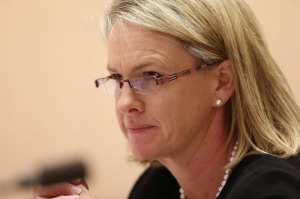
The launch of the National Aboriginal and Torres Strait Island Health Implementation Plan by Rural Health Minister Fiona Nash on October 22 is another important milestone on the long path towards achieving the goals of Australian governments to Close the Gap in child mortality and life expectancy. It is potentially a game changer and comes at a critical time for Australia’s Indigenous people, following the threats to remote Indigenous communities in WA, cuts to major programs such as those aimed at reducing smoking by Indigenous people, and what is widely seen as a debacle with changes to the Indigenous Advancement Strategy.
It was generally recognised that the national Aboriginal and Torres Strait Island Health Plan launched by former Indigenous health minister Warren Snowdon needed an implementation plan to turn the concepts in that document to services which would actually alter what happens on the ground, and deliver the services which are needed to Close the Gap. Of course the NATSIHIP isn’t really a fully developed implementation plan at this stage, and probably couldn’t be, but it does have the architecture of one, and recognises most of the key elements. Full credit to Minister Nash and to the National Indigenous Health Leadership Forum for reaching this stage.
The NATSIHIP recognises the central importance of culture and racism in shaping Indigenous health and, for the first time, starts to come to grips with the obvious question of what services are need to Close the Gap, what workforce is required and how would they be paid for. Most importantly, it focuses on the need to identify the areas with relatively poor health and not enough services, to make capacity building of services in those areas a priority. Some health gains are possible through improvements to services for people already receiving some kind of service, but much more gain is possible through provision of services to those who aren’t receiving them or aren’t receiving adequate services.
But the real work lies ahead. The key question of identifying a set of services required to Close the Gap remains to be tackled, although fortunately there is some excellent work on this topic in the NT that can be used as a starting point. Once the services are clearly defined, then the workforce requirements and funding strategies can be developed. This does not mean that there is an inbuilt assumption of an unlimited bucket of money to fund services but it does imply shifting the current ad hoc inequitable and inefficient funding mechanisms to a more rational basis and clearly identifying service gaps for government consideration.
So, the first key point is that the NATSIHIP is not a one-off, static, glossy piece of paper. Rather it is an ongoing process whose aim is the continuous improvement of services. The goals are achievable but require high quality services delivered in the right way. That is the job of the NATSIHIP and it is to be achieved, not through words, but with services and actions on a continuing long-term basis, and a small combined Indigenous/government oversight group for that purpose is essential.
What is missing at this stage? Firstly, a process to define the core services and associated workforce and funding strategies. Secondly, “training opportunities” need to become a formal national training plan. Much greater value will be achieved from funds for Indigenous health services if all those involved are actually trained in how best to provide those services. This means training public servants in health planning, health administration and the core elements of Indigenous health, training clinicians in technical and cultural aspects of Indigenous health, and managers and board members of health service organisations. And everyone involved needs to understand, live and breathe Continuous Quality Improvement.
It also means much improved management and information processes. A dedicated share of the eHealth budget is required to ensure funds to monitor and support continuity of care and quality improvement across both mainstream and Aboriginal Community Controlled Health Services (ACCHS). Management needs to be reshaped from a blind contract management process to a mutual, shared process between funder and service provider process which will guarantee return on investment.
And much more work needs to be done to develop a sensible set of targets (badged as “Goals” in the Implementation Plan). The National Indigenous Health Equality Targets developed by a broad range of organisations is a sensible starting point. These targets identified the health issues responsible for the life expectancy and child mortality gaps (chronic disease, low birth weight etc), defined services required for those topics, spelt-out infrastructure requirements (workforce and funding) and the central importance of social determinants.
The targets identified in the NATSIHIP seemed to have been framed to present predictions from current trajectories and rather miss the point. A target is an aspiration, not a prediction and needs to bear a logical relationship with the overall Goal (Close the Gap) and with the level of investment in a given time period. The level of health gain is closely linked to the degree of service enhancement that is possible. For this reason, the critical targets at this stage are those for service provision and can really only be set when the core service requirements are defined.
The success of the NATSIHIP will ultimately turn on all these elements and particularly on building up ACCHS services in areas lacking sufficient services, lifting the standard of mainstream services and formal structures and mechanisms for both types of services to work constructively together in each region of Australia.
There is still a long way to go but everyone involved, including Minister Nash and the Indigenous health leaders should be congratulated for reaching this stage.
Ian Ring is a professorial fellow at the Australian Health Services Research Institute at the University of Wollongong.
